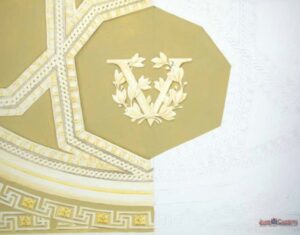Preserving the rich history and architectural integrity of historic campuses is a delicate and challenging task. When it comes to restoration projects, one of the key decisions is selecting substitute materials that seamlessly blend with the original design while meeting modern safety and durability standards. This blog post will explore the importance of choosing the right substitute materials and discuss considerations for achieving a harmonious balance between preservation and functionality.
Understanding the Significance:
Before diving into material choices, it’s essential to comprehend the historical and cultural significance of the campus. What era does the architecture belong to? Are there specific design elements that define its character? Did important events, ideas, or cultural moments happen at the campus? Every campus has its own story through its unique design, showcasing the spirit of a particular era. This deep understanding guides us in choosing substitute materials, ensuring that the restoration preserves not just the structure but also the essence and history of the campus. Essentially, delving into the layers of historical significance turns the restoration into a celebration of our historic campuses’ profound legacy, going beyond mere aesthetics.
The Sterling Memorial Library at Yale University was restored using historical materials and techniques outlined by the original architect, James Gamble Rogers.
Respecting Historical Aesthetics:
Preserving the visual charm of historic campuses often requires a meticulous approach to material selection. Opting for substitute materials that closely resemble the originals in color, texture, and overall appearance is crucial. In some cases, replicating the exact characteristics of the original materials might be challenging due to architectural ability or availability constraints. However, advances in technology and craftsmanship have provided architects and restoration experts with a broader range of options, enabling them to replicate historic materials with remarkable accuracy. Seeking materials that closely mimic the appearance and texture of the historic components, ensuring that the overall aesthetic remains true to its roots is crucial. Whether it’s masonry, woodwork, or roofing materials, the goal is to achieve a cohesive appearance that honors the original craftsmanship.
Understanding Functional Requirements:
While maintaining historical aesthetics is paramount, it is equally important to ensure that substitute materials meet modern functional standards. Considerations such as structural integrity, fire resistance, and environmental sustainability must be taken into account. Collaborating with experts in both historical restoration and modern construction can help strike the right balance between authenticity and functionality. In today’s environmentally conscious era, selecting substitute materials that are sustainable and eco-friendly is desirable. This not only contributes to reducing the carbon footprint of the restoration project but also ensures the long-term well-being of the historic campus. Sustainable substitutes can include recycled materials, energy-efficient solutions, and those with minimal environmental impact.
Choosing the correct substitute materials will contribute to the sustainability of the restoration and also reduce maintenance costs in the long run.

Farquharson Hall at the Culinary Institute of America was restored to its original seminary chapel design for current-day use as a dining hall.
Adhering to Preservation Guidelines:
Many historic campuses fall under preservation guidelines and regulations that dictate the materials and methods used in restoration projects. It is crucial to thoroughly research and understand these guidelines to ensure compliance. Before finalizing material choices, it’s imperative to consult with preservation experts and regulatory bodies to ensure compliance. This step ensures that the restoration aligns with established guidelines and maintains the historic integrity of the campus.
Testing and Mockups:
Before implementing substitute materials on a large scale, conducting thorough testing and creating mockups can help evaluate their compatibility with the historic structure. This process allows for adjustments and refinements, ensuring that the chosen materials not only look the part but also function effectively in the intended applications. Materials undergo comprehensive assessments to ensure compatibility, durability, and authenticity, with a focus on their resilience against environmental factors. Creating mockups on-site or in the studio allows conservators to visualize the substitute materials within a space, ensuring that the color, finish, texture, and overall compatibility with the original materials are as close as possible.
Mockups on-site (left) and in the studio (right)
Balancing Cost Considerations:
Budget constraints are a common challenge in restoration projects. However, it is essential to strike a balance between cost-effectiveness and quality. Investing in high-quality substitute materials may initially seem more expensive, but the long-term benefits of durability and reduced maintenance costs often outweigh the upfront expenses. This requires careful planning and collaboration with project stakeholders to ensure the restoration remains financially viable.
Restoring historic campuses is a complex undertaking that demands careful consideration of various factors, particularly when choosing substitute materials. By combining a commitment to historical aesthetics, modern functionality and sustainability, adherence to preservation guidelines, and thorough testing, restoration projects can successfully revive the past while ensuring a sustainable and resilient future for these cherished educational institutions.















